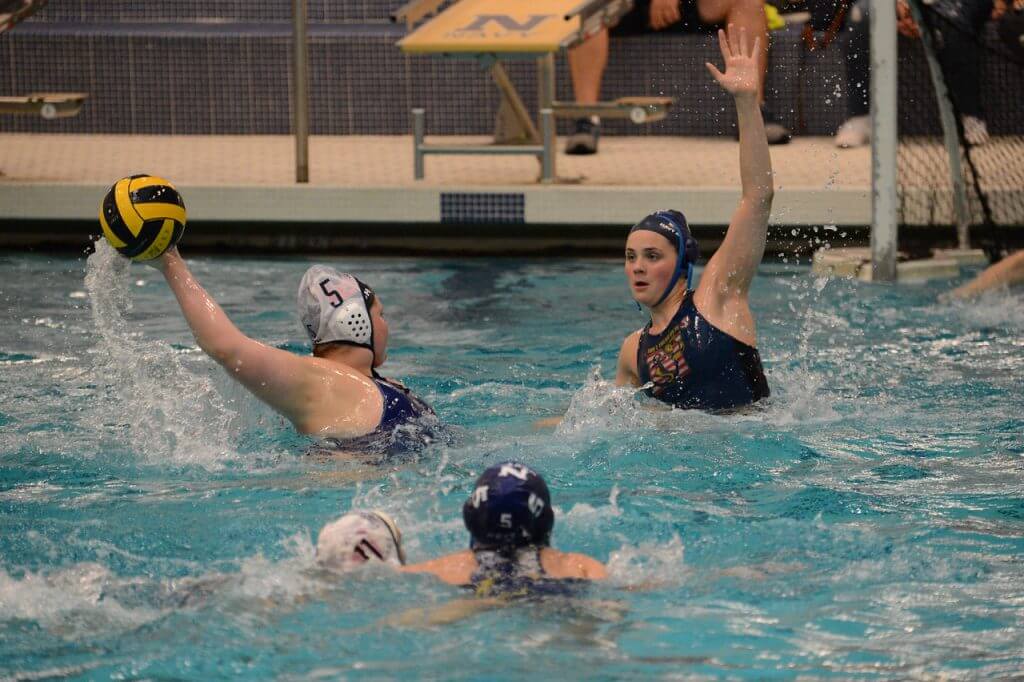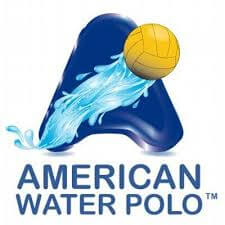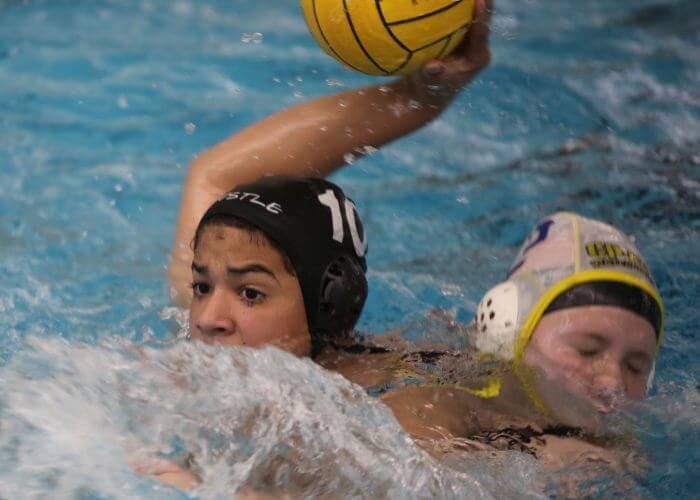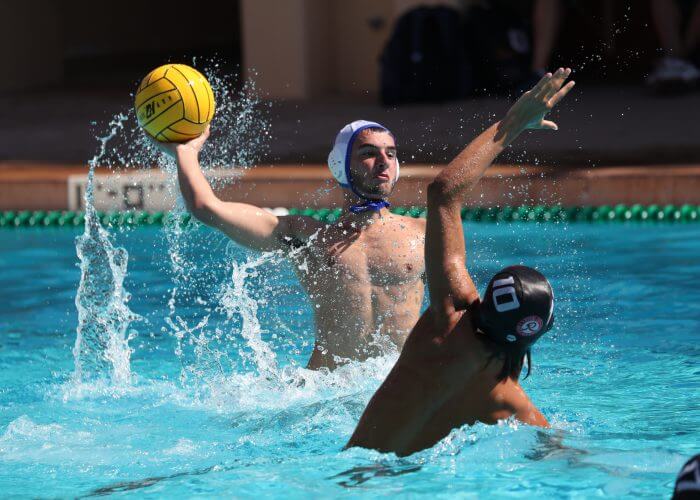Damon Newman of American Water Polo: Looking To a Brighter Future

As fallout from the coronavirus outbreak stretches from days to weeks, the desire for what comes next—when it’s again safe to congregate—is that much stronger. That includes water polo; all play is suspended and major tournaments like the national Junior Olympics, the world’s biggest youth water polo event, are threatened by the lingering impact of the pandemic.
 American Water Polo (AWP)—second only to USA Water Polo in promoting the sport in America—has furloughed its Main Line League tournament. Contested primarily in the Philadelphia suburbs, hundreds of age group athletes have been sidelined, likely until the end of May.
American Water Polo (AWP)—second only to USA Water Polo in promoting the sport in America—has furloughed its Main Line League tournament. Contested primarily in the Philadelphia suburbs, hundreds of age group athletes have been sidelined, likely until the end of May.
Ideally, not for much longer. Damon Newman, AWP’s director of membership is already plotting for when polo comes back. He has a long history with polo in the region; first as an age group player from outside of Philadelphia, than an all-state player at Wissahickon High School, and a collegiate player at Iona (1998-2001). Newman has already outlined a plan for his league—and other tournaments in the region—to shift to a summer schedule, when pool time might be available to satisfy pent-up demand.
Earlier this week, Swimming World spoke with Newman about the challenges for polo athletes to stay sharp out of the water, his organization’s capability to marshal a host of resources to stage high-caliber play and creating a variety of opportunities for players of all ages and ability to compete when it’s safe for everyone to get back in the pool.
– For aquatic sports, there’s no substitute for water—but no facilities are currently available for polo athletes to train.
Unless you have the luxury of a backyard pool—which not a lot of us have—the most important thing for athletes to do is get out and be as active as they can. Whether that’s checking out workouts online or doing body weight workouts. KAP 7 has put out some really good videos. We’ve got stuff on “Tips of the Week.” USA Water Polo has been putting things out.
Utilizing any kind of resources that are accessible to you is important—but they should follow the guidelines of the CDC and stay safe [given] COVID-19.
– Age group polo in America focuses on the summer for top competition; now there’s no certainty that high-level events will take place.
Everyone is in a holding pattern; what’s going to happen with national tournaments, what’s going to happen with qualifiers? What happens with our spring league and our large summer tournament?
It’s all up in the air.
I wish there was an easy answer for me to say: Two months down the line we hope , things are going to level off and get back to normal. What we can do is look to host [events] in the summer. We canceled our local league [in Pennsylvania]—that’s probably 500 athletes. We hope to transition that into summer opportunities.

Photo Courtesy: John Inwood
Athletes aren’t able to do the things that they love to do—and that’s the thing for us. We want to create opportunities for athletes to play water polo. When that’s not happening it’s really a shame.
– As the health crisis lessens, there likely will be pent-up demand for all sports, including water polo. How is AWP positioned to meet this demand?
We’re in a unique situation where we can potentially host local events in the Northeast if given the opportunity. I don’t want to mislead because it’s hard to predict what will happen. What I can say for us is we’ll be prepared to create competition—as we have done in the spring and the summer and throughout the year—for our athletes.
– Your audience is in Pennsylvania and—because of all the high school teams—there are many aquatics facilities throughout the state. Will you be able to access those pools this summer?
Our primary audience is actually in several states, but we still want to serve those in Pennsylvania whenever we can.
There will be lots of athletes chomping at the bit to get back into the pool. If there is a need, we’re trying to fill it. I’ve heard from coaches [asking] what’s the plan for the Main Line League, currently closed until the end of April.
Having the opportunity to hold a summer league—there’s people out there who want to do this.
The interesting thing about our part of Pennsylvania, there isn’t a lot of age group water polo being played in the summer, with the exception of a handful of clubs. It’s generally something that the high school players do.
This could spur some coaches to say: Hey, my athletes didn’t have the opportunity to play in the spring. If there’s a chance that we can play in the summer, then so be it!
We’re hoping that people will want to do that and we’ll do our best to provide that.
– High school juniors and seniors are particularly hurt by the layoff; combines to showcase their ability may happen but if the JOs don’t, a lot of athletes, particularly in the Northeast, will not get the exposure needed to draw interest from college coaches.
How do you expect this to play out for someone who wants to go to college to be seen by a coach? That’s the question… and only time will tell when opportunities like the combines and large tournaments throughout the country where coaches do scouting will take place.
If that’s not there, it could be that athletes have to rely more on game film and coaches will rely on recommendations from high school coaches—instead of physically seeing these athletes play.
I don’t see any other way to compare watching someone at a combine or playing in a big tournament. If that’s an absent opportunity, it’s going to negatively affect those kids.
– Given your affiliation with the CWPA, the country’s biggest association of collegiate and club polo athletes—might high-level tournaments be played and streamed so college coaches can see live polo?
Everything’s on the table. If it’s feasible and if there’s enough athletes that have an interest in this, it something we would consider exploring. We are still hoping that our national competition, the National State Challenge, will take place this July in Chicago.

USA Water Polo’s Junior Olympics are the world’s premier youth polo tournament. Photo Courtesy: Catharyn Hayne
I do see the perspective that some of these coaches will get in their own car and make a five-hour drive instead of being in a plane [to California] for five hours. Again, we just don’t know what life is going to look like.
– How might AWP leverage its relationship with the CWPA at this time?
We share an office space. We share Dan Sharadin, who’s the commissioner of the Collegiate Water Polo Association and also the executive director of American Water Polo. He heads both organizations, so obviously there’s a connection. We already partner on some video opportunities like Tip of the Week,
There could be opportunities in this time to do some other collaborations as well.
– USA Water Polo and AWP share overlapping missions. How might you both collaborate to fill a desperate need to get kids back in the water as soon as possible?
We’ve always said that we’re co-existing with whomever is out there. We have our mission and there is crossover between the two organizations in terms of that mission.
We all agree that we want to get more kids playing water polo. If you look at a sport like swimming, even in the Philadelphia / New York metro area there’s a couple of hundred thousand kids just swimming. If you look at how many people are playing water polo, it’s a small percentage of that.
At a time like this we’re an open door. We’ll listen to anyone who has a good idea and wants to work together.



